We use cookies to make your experience better. To comply with the new e-Privacy directive, we need to ask for your consent to set the cookies. Learn more.
Rolex Milgauss: A Scientific Legend from CERN Laboratories to Collectors’ Wrists
Introduction
When scientists at the European Organization for Nuclear Research (CERN) were plagued by the disruption of mechanical watches under intense magnetic fields, little did they imagine that the solution to their dilemma would become a coveted star in 21st-century auction houses.
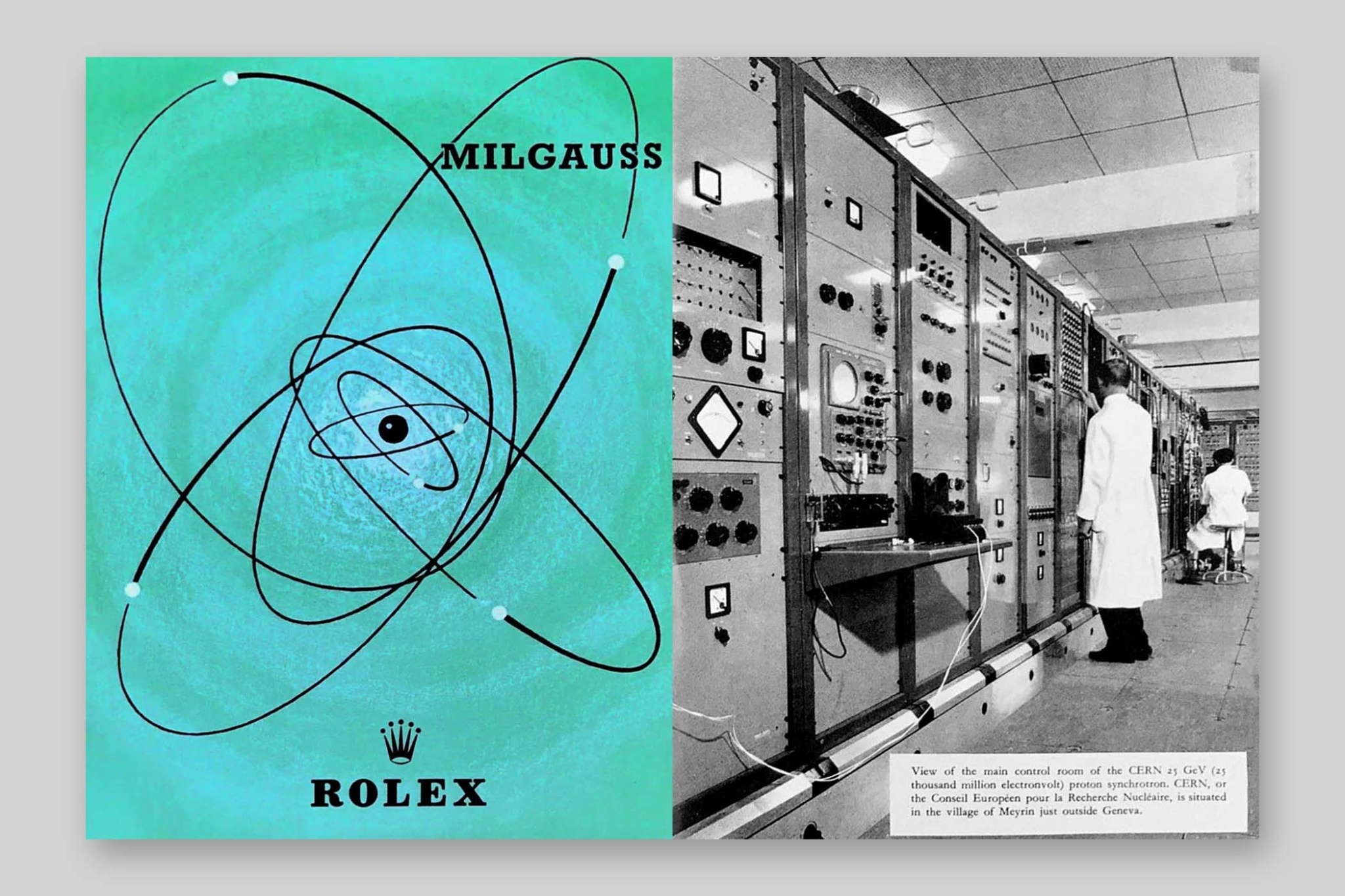

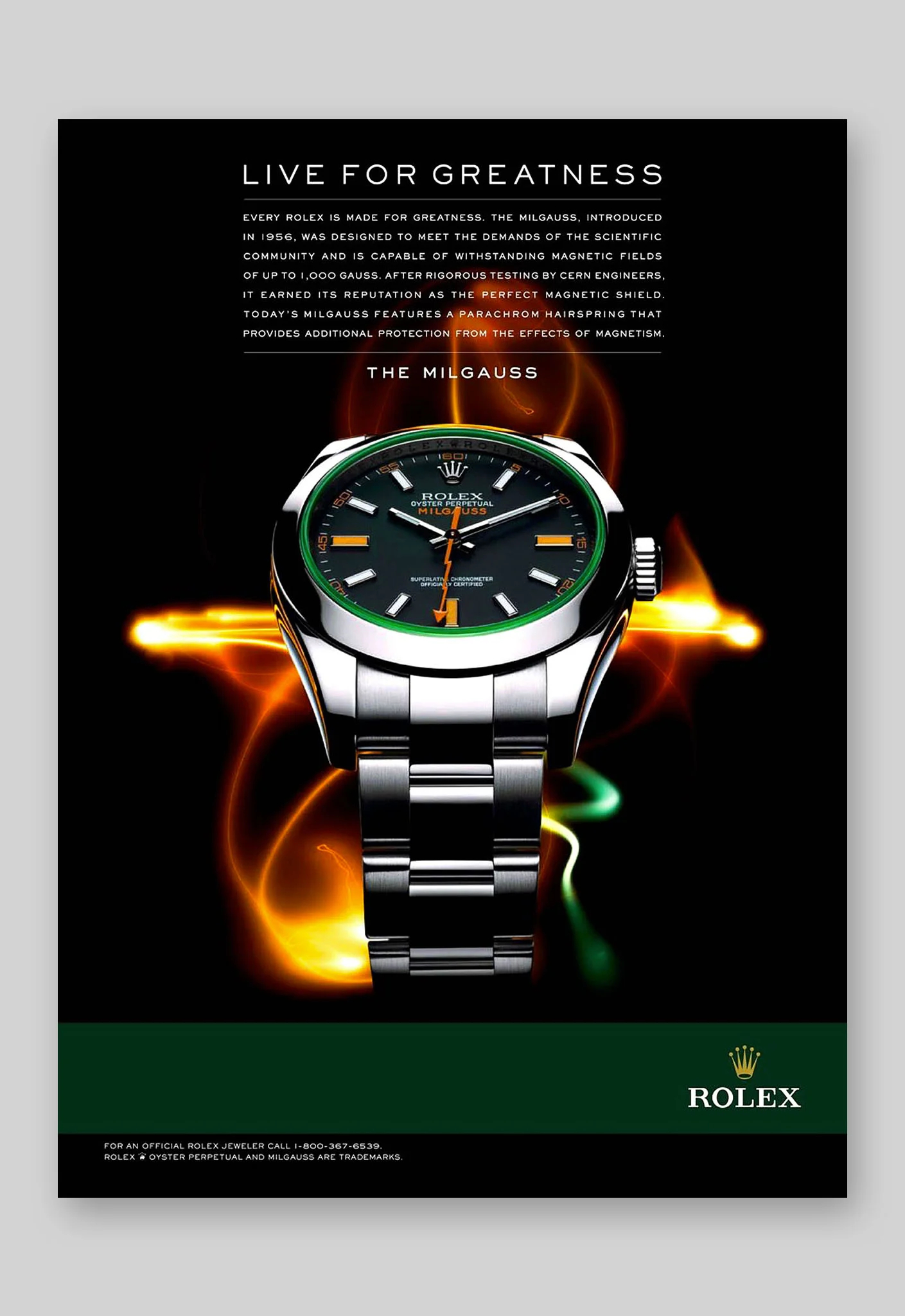

Within the Rolex cosmos, the Milgauss stands as a paradoxical enigma:
- Born in the 1950s out of the laboratory needs of quantum physics, yet long overlooked by mainstream markets due to its label as a “scientist’s watch”;
- Capable of withstanding magnetic fields up to 1,000 gauss (equivalent to one-fifth the strength of an MRI machine), yet celebrated as a fashion icon for its lightning-bolt second hand and green sapphire crystal;
- Revived in 2007 amid the completion of the Large Hadron Collider, only to find its anti-magnetic technology already outpaced by silicon escapement mechanisms.
Once produced in batches as scarce as 75 pieces, the Milgauss Ref. 6541 now commands record-breaking prices at Phillips auctions. This transformation from a mere “tool” to a treasured “collectible” encapsulates one of watchmaking’s most intriguing paradoxes: truly revolutionary innovations are often undervalued for being ahead of their time, only to be rediscovered later due to their rarity.
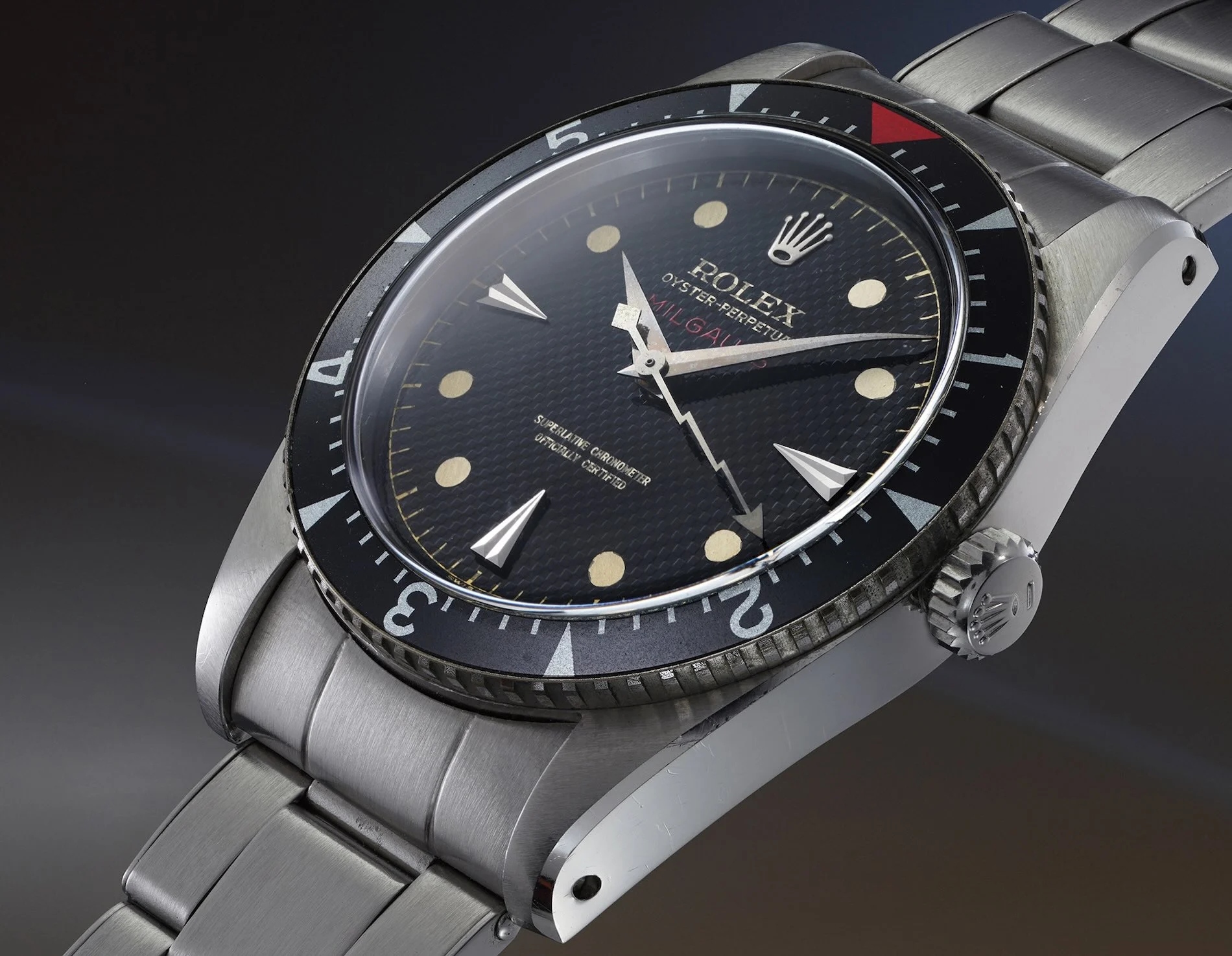

II. Historical Context of the Milgauss
1.Inception: A Product of Scientific Necessity (1950s)
In 1956, scientists at CERN grappled with a pressing issue: strong magnetic fields in their laboratories caused traditional mechanical watches to lose accuracy. While ordinary watches could resist only about 50 gauss, lab environments often exceeded 1,000 gauss. In response, Rolex unveiled the Milgauss (Ref. 6541), its name derived from the French “mille” (thousand) and the magnetic induction unit “gauss,” heralding its groundbreaking ability to withstand 1,000 gauss.
Its technical core lay in:
- Faraday Cage Principle: A soft iron inner shield embedded within the case to block magnetic fields;
- Special Hairspring: Crafted from a paramagnetic alloy to minimize magnetization effects;
- Lightning-Bolt Second Hand: Designed for enhanced visibility in lab settings (later becoming an iconic aesthetic trait).
However, tailored specifically for scientists, this tool watch found a niche audience, with annual production under 200 pieces and a lukewarm market response.
Dormancy: A Forgotten “Laboratory Tool” (1960s-1980s)
By the 1960s, advancements in anti-magnetic technology (such as IWC’s Engineer series) diminished the Milgauss’s edge. Rolex quietly discontinued the line in 1988, with only minor updates like Ref. 1019, which abandoned the lightning hand for a more conservative design, further diluting its professional identity.
During this era, the Milgauss became a symbol of “outdated functionality”:
- Virtually ignored in the collectors’ market, with second-hand prices consistently below retail;
- Surviving pieces often suffered from neglected maintenance, as scientists showed little interest in watch collecting;
- Some were even disassembled for parts to modify other Rolex models.
Rebirth: From Technical Legacy to Cultural Icon (2007-Present)
In 2007, capitalizing on the tech fervor surrounding CERN’s Large Hadron Collider (LHC) launch, Rolex resurrected the Milgauss (Ref. 116400), retaining the classic anti-magnetic structure while introducing a green sapphire crystal and orange lightning hand—a bold departure from traditional aesthetics.
This revival was essentially an exercise in “technical nostalgia”:
- Anti-magnetic capability was no longer the selling point (modern silicon hairsprings resist up to 15,000 gauss);
- Design became the centerpiece: The green crystal, with its unique iridescent refraction, earned the nickname “laser glass”;
- Scarcity fueled speculation: Initial limited supply drove the Ref. 116400GV (green glass variant) to a 50% premium over retail.
By 2023, the new Ref. 126400 featured the 32-series movement, yet collectors still coveted early models—especially the 1950s original Ref. 6541, which fetched over $250,000 at auction, cementing its journey from “technical tool” to “cultural symbol.”
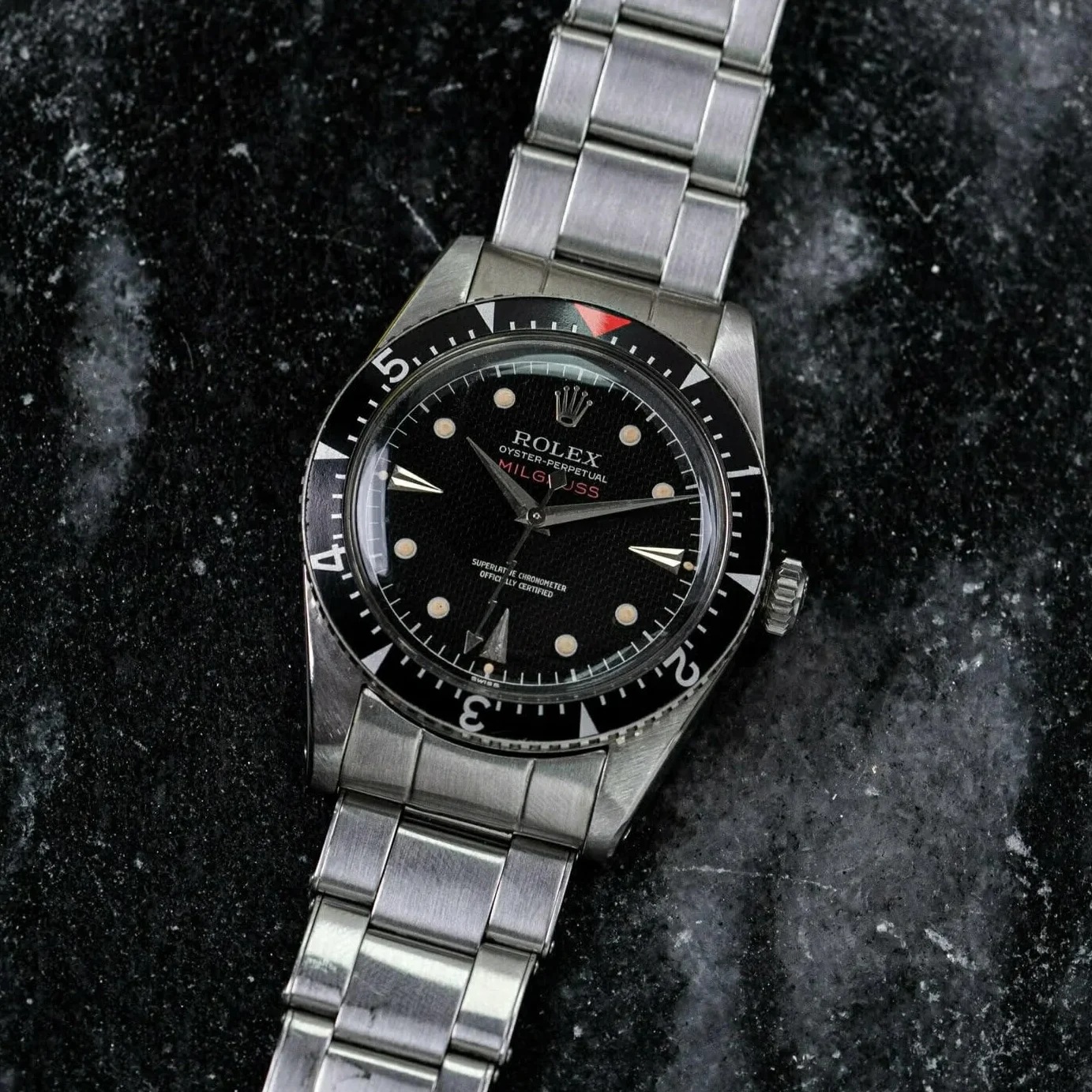

III. Technical Deep Dive and Market Analysis of the Milgauss
The Rolex Milgauss is a legendary niche timepiece, originally designed in the 1950s in collaboration with CERN to resist magnetic fields up to 1,000 gauss—a remarkable feat for its era. The inaugural Milgauss Ref. 6543 was more a proof of concept, with extremely limited production, making pristine early models nearly impossible to find today.
From a technical perspective, the Milgauss’s pioneering innovation lies in its anti-magnetic prowess, initially achieved through a soft iron Faraday cage within the case, far surpassing the 50-gauss resistance of most contemporary watches. Current iterations have evolved, incorporating the paramagnetic Parachrom hairspring and nickel-phosphorus escapement for enhanced protection.
However, with advancements in horology—particularly the advent of silicon components and METAS certification (requiring resistance to 15,000 gauss)—the modern Milgauss appears technologically outdated. This positions its 1,000-gauss benchmark as less competitive in today’s high-end anti-magnetic watch market.
In terms of market positioning, the Milgauss’s fate has fluctuated over time. Initially a tool watch for scientists, its niche focus prevented it from gaining the widespread appeal of dive or explorer watches. Yet, over the years, especially post-2007 re-release, it began captivating collectors and fashion enthusiasts, drawn by its distinctive design and compelling backstory.
From a product standpoint, the Milgauss leverages Rolex’s brand prestige and unique elements (like the lightning hand and green sapphire crystal) to maintain a following in the collectors’ market, though it remains a niche luxury offering compared to other models.
To solidify its market standing, the Milgauss may require a technical update to meet modern watchmaking challenges while continuing to capitalize on its iconic design and historical narrative. This dual approach could retain its loyal fanbase while attracting a new generation of enthusiasts.
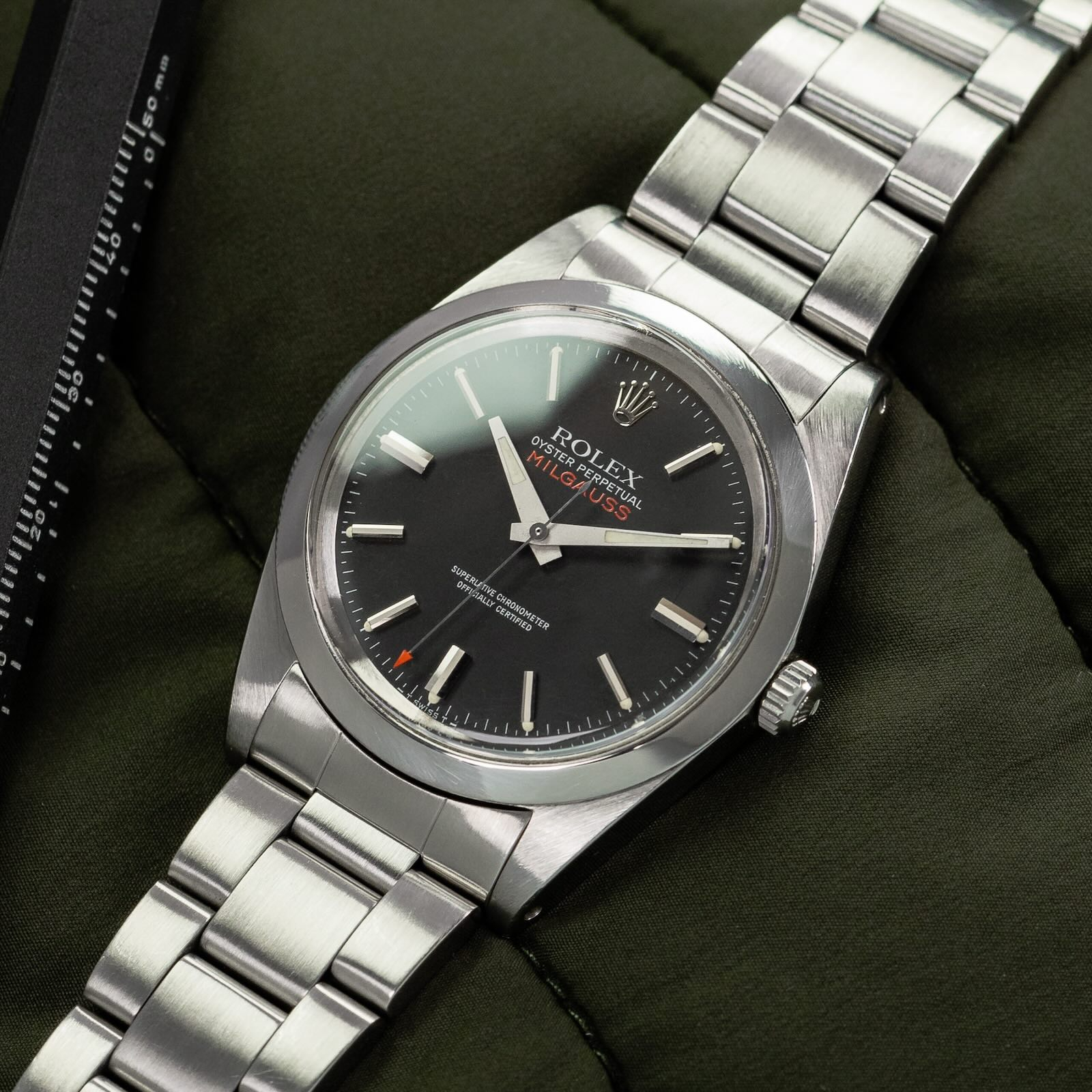

IV. Four Questions on the Future of the Milgauss
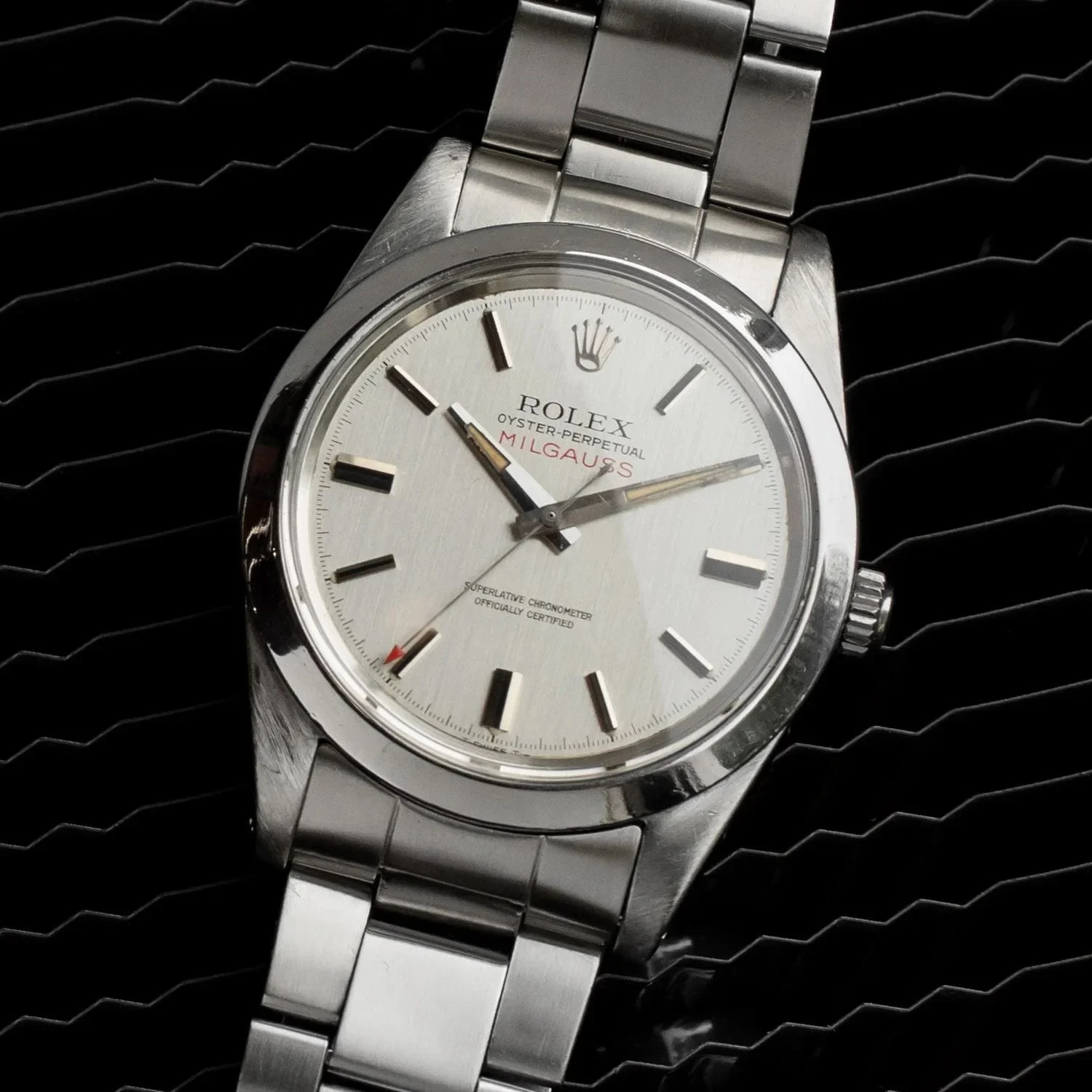

Will the Milgauss See a Third Revival?
Given its history of discontinuation and return (first launched in the 1950s, discontinued, revived in 2007, and discontinued again by 2023), the unique “scientific watch” positioning suggests a cyclical resurgence is plausible. Major breakthroughs at institutions like CERN could easily inspire Rolex to relaunch the series.
Can Its Technology Meet Modern Demands?
Currently, the Milgauss’s 1,000-gauss anti-magnetic standard lags behind the industry’s new benchmarks of silicon hairsprings and METAS certification (15,000 gauss). However, integrating cutting-edge innovations like Rolex’s developing DynaPulse escapement could redefine the “scientist’s watch” in terms of magnetic resistance.
Can Its Design Language Continue to Captivate Collectors?
Iconic elements like the lightning second hand and green sapphire crystal (Z-Blue dial) remain darlings of the auction market—Ref. 6541 achieved a record 2.24 million CHF in 2023. This distinctiveness is a core strength, though it requires fresh iterations akin to the 2014 electric-blue dial to sustain interest.
The Crucial Question: How Can the Milgauss Balance Tradition and Innovation?
The Milgauss faces a conundrum: preserving its “scientific tool watch” heritage while meeting escalating consumer expectations for anti-magnetic performance. Perhaps its next iteration could merge the aesthetic of the orange lightning hand with a movement resistant to 15,000 gauss. If even the Air-King can be rejuvenated with explorer elements, the third life of the Milgauss is equally worth anticipating.



